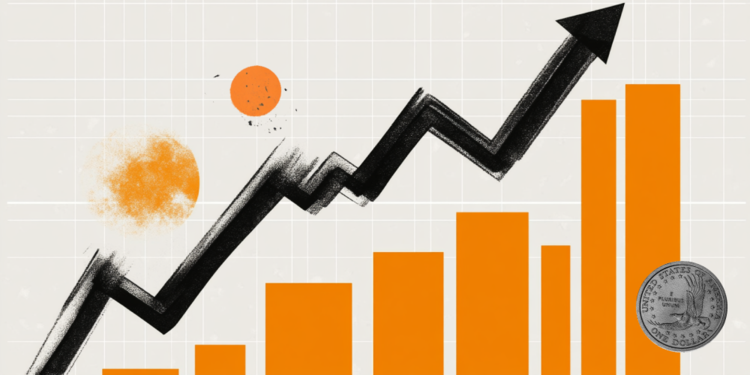- The Greenback is reclaiming some losses for this week after strong NFP numbers.
- Focus shifts now to Fed Chairman Jerome Powell speaking later this Friday.
- The US Dollar Index is back above 102.00 and looks to close above the level before the weekend.
The US Dollar Index (DXY), which tracks the performance of the US Dollar (USD) against six major currencies, rallied after some strong Nonfarm Payrolls numbers while markets look ahead for Federal Reserve (Fed) Chair Jerome Powell’s speech up next. China meanwhile lashed out at the US tariffs by imposing a 34% tariff on all US goods from April 10th, a day after the US tariffs will be imposed. Question will be if other countries join China in retaliation while the ‘deal-making’ US President Donald Trump was referring to on Thursday, does not seem to be taking place right now.
On the economic calendar front, the Nonfarm Payrolls release (NFP) came in upbeat at 228,000, far from the consensus view of 135,000. The most positive forecast was for 200,000, which makes the actual number an outside surprise. Now focus shifts to the Federal Reserve to see if Fed Chairman Powell can alter or support the current stance in the DXY.
Daily digest market movers: Pharma is coming
- As the day evolves, Trump mentioned on Air Force One that China has panicked by retaliating and that the pharma sector is up next for tariff implementations.
- US employment data for March has been released:
-
- Nonfarm Payrolls came in at 228,000, beating the 135,000 consensus and upbeat compared to 151,000 in February.
- The monthly Average Hourly Earnings remained stable at 0.3%.
- The Unemployment Rate came in at 4.2%, a touch higher than the 4.1% from February.
- At 15:25 GMT, Federal Reserve Chair Jerome Powell speaks about the economic outlook at the Society for Advancing Business Editing and Writing (SABEW) Annual Conference.
- At 16:00 GMT, Fed Governor Michael Barr will speak on AI and Banking.
- Fed Governor Chris Waller will speak at 16:45 GMT on Payments at a New York Fed Conference.
- Murder on the trading floor with losses in Europe around 3%-4% while US equities are dipping near 2%.
- According to the CME Fedwatch Tool, the probability of interest rates remaining at the current range of 4.25%-4.50% in May’s meeting is 68.1%, coming from 81.5% last week. For June’s meeting, the odds for borrowing costs being lower stand at 92.6%, whereas only last week, the odds were roughly 81.1%.
- The US 10-year yields trade around 3.94%, a fresh five-month low with the next low to bear near 3.69% from the beginning of October 2024.
US Dollar Index Technical Analysis: Quite the shift
The pendulum is swinging for the US Dollar Index, with strength on the left and weakness on the right. On the left, there have been years of US Dollar strength, which was perceived as a market standard. However, since the start of March – with the defense budget spending bill in Germany and US President Donald Trump in office – the pendulum for the DXY has swung. More US Dollar weakness is likely once the tariff impact on the US economy starts to take its effect. As stagflation and recession fears are picking up, the DXY could easily fall below 100.00 later this year.
With the sizable downward move on Thursday, some support levels have turned into resistance. The first level to watch out for is 103.18, which has been held as support throughout March. Above there, the 104.00 pivotal level and the 200-day Simple Moving Average (SMA) at 104.89 come into play.
On the downside, 101.90 is the first line of defense and it should be able to trigger a bounce as the Relative Strength Index (RSI) momentum indicator is issuing warnings of oversold conditions on the daily chart. Maybe not this Friday, but in the coming days, a break below 101.90 could see a leg lower towards 100.00.
US Dollar Index: Daily Chart
Fed FAQs
Monetary policy in the US is shaped by the Federal Reserve (Fed). The Fed has two mandates: to achieve price stability and foster full employment. Its primary tool to achieve these goals is by adjusting interest rates.
When prices are rising too quickly and inflation is above the Fed’s 2% target, it raises interest rates, increasing borrowing costs throughout the economy. This results in a stronger US Dollar (USD) as it makes the US a more attractive place for international investors to park their money.
When inflation falls below 2% or the Unemployment Rate is too high, the Fed may lower interest rates to encourage borrowing, which weighs on the Greenback.
The Federal Reserve (Fed) holds eight policy meetings a year, where the Federal Open Market Committee (FOMC) assesses economic conditions and makes monetary policy decisions.
The FOMC is attended by twelve Fed officials – the seven members of the Board of Governors, the president of the Federal Reserve Bank of New York, and four of the remaining eleven regional Reserve Bank presidents, who serve one-year terms on a rotating basis.
In extreme situations, the Federal Reserve may resort to a policy named Quantitative Easing (QE). QE is the process by which the Fed substantially increases the flow of credit in a stuck financial system.
It is a non-standard policy measure used during crises or when inflation is extremely low. It was the Fed’s weapon of choice during the Great Financial Crisis in 2008. It involves the Fed printing more Dollars and using them to buy high grade bonds from financial institutions. QE usually weakens the US Dollar.
Quantitative tightening (QT) is the reverse process of QE, whereby the Federal Reserve stops buying bonds from financial institutions and does not reinvest the principal from the bonds it holds maturing, to purchase new bonds. It is usually positive for the value of the US Dollar.
Read the full article here

